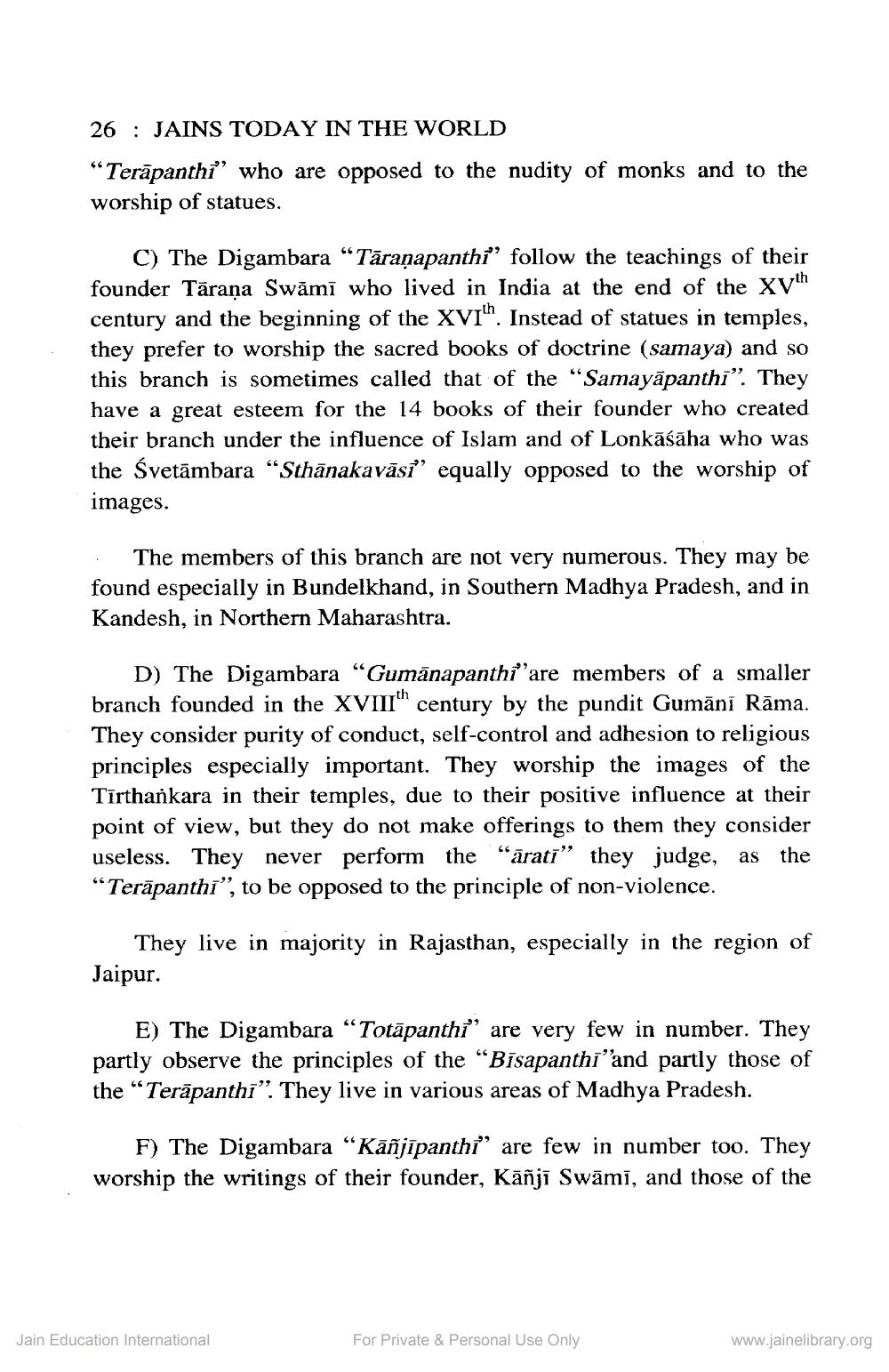________________
26 : JAINS TODAY IN THE WORLD “Terāpanthi” who are opposed to the nudity of monks and to the worship of statues.
C) The Digambara “Tāraṇapanthi” follow the teachings of their founder Tāraṇa Swāmī who lived in India at the end of the XVh century and the beginning of the XVI". Instead of statues in temples, they prefer to worship the sacred books of doctrine (samaya) and so this branch is sometimes called that of the “Samayāpanthi". They have a great esteem for the 14 books of their founder who created their branch under the influence of Islam and of Lonkāśāha who was the Svetāmbara "Sthānakavāsi” equally opposed to the worship of images.
• The members of this branch are not very numerous. They may be found especially in Bundelkhand, in Southern Madhya Pradesh, and in Kandesh, in Northern Maharashtra.
D) The Digambara “Gumānapanthi are members of a smaller branch founded in the XVIII" century by the pundit Gumāni Rāma. They consider purity of conduct, self-control and adhesion to religious principles especially important. They worship the images of the Tīrthankara in their temples, due to their positive influence at their point of view, but they do not make offerings to them they consider useless. They never perform the "ārati” they judge, as the “Terāpanthi”, to be opposed to the principle of non-violence.
They live in majority in Rajasthan, especially in the region of Jaipur.
E) The Digambara “Totāpanthi" are very few in number. They partly observe the principles of the “Bīsapanthi”and partly those of the “Terāpanthi”. They live in various areas of Madhya Pradesh.
F) The Digambara “Kāñjīpanthi" are few in number too. They worship the writings of their founder, Kāñji Swāmī, and those of the
Jain Education International
For Private & Personal Use Only
www.jainelibrary.org




